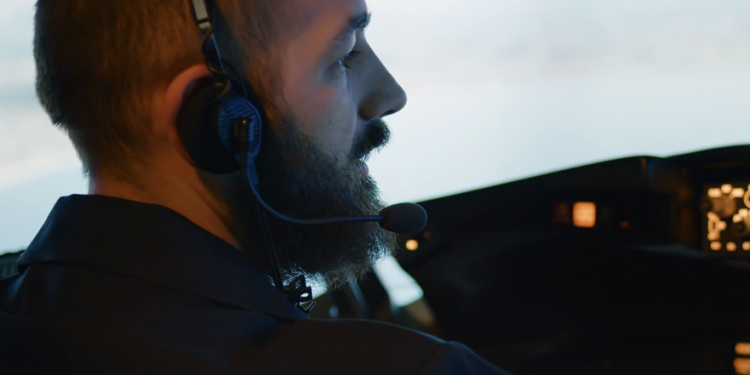Introduction
Upgrading hearing protection across a fleet is a management task that benefits from a checklist. You need to balance performance, comfort, operational uptime, and budget. The goal is straightforward: pick solutions that crews will actually use, that maintain consistent performance, and that integrate with existing headsets and procedures. Below is a practical checklist designed for fleet managers who want to make an effective, no-nonsense upgrade.
Step 1: define operational requirements
Start by documenting the environments your teams work in: cockpit noise profiles, ramp activity, maintenance bays, and cabin zones. Identify whether crews need protection that emphasizes steady low-frequency attenuation or models that also handle intermittent spikes.
Knowing these conditions helps you evaluate which products match your real needs and will point to the best earplugs for aircraft noise for your fleet.
Step 2: set measurable performance criteria
Choose objective metrics such as noise reduction ratings, frequency attenuation profiles, and speech preservation characteristics. Require vendors to provide these numbers and, if possible, real-world data from similar operations.
Having clear acceptance criteria speeds procurement and reduces ambiguity during trials.
Step 3: trial with representative crews
Run field trials across different aircraft types and crew roles. Trial durations should match real duty days so crews test comfort across long shifts. Collect structured feedback on fit, speech clarity, headset compatibility, and maintenance burden.
Practical feedback from pilots and ground staff is often the deciding factor in selecting the best aviation earplugs for operational use.
Step 4: evaluate compatibility with headsets and PPE
Test each candidate with the headsets and helmets your crews use. Prioritize combinations that avoid pressure points and maintain microphone placement. A plug that forces headband adjustments or cushions to mis-seat will cause complaints and lower compliance.
Compatibility testing prevents costly mismatches after deployment.
Step 5: require hygiene and maintenance guidance
Pick products with clear cleaning instructions and replaceable components. Durable materials that clean easily reduce lifetime costs and help crews follow hygiene routines. Include spare parts in your procurement so replacements are immediate when needed.
A product you can maintain simply is one your teams will keep using.
Step 6: calculate lifecycle cost, not just unit price
Compare the lifetime cost of disposables to reusable options. Factor in replacement frequency, cleaning supplies, and the time crews spend adjusting or troubleshooting gear. Don’t forget to include waste disposal savings and the potential reduction in hearing-related health claims over time.
This broader view often makes higher-quality products more cost-effective.
Step 7: standardize and document
Once you choose products, standardize across the fleet where practical. Create clear SOPs for insertion checks, cleaning, storage, and replacement intervals. Provide quick-reference guides in briefing packs and include hearing protection checks in preflight or daily inspections.
Standardization reduces variety-related confusion and simplifies inventory management.
Step 8: train crews and supervisors
Roll out training that covers proper insertion, fits checks, and maintenance. Train supervisors to spot signs of poor fit and to enforce the maintenance schedule. When crews understand the why behind a new product, compliance improves.
Training is the bridge between a good product and a consistent safety outcome.
Step 9: maintain spares and supply chain resilience
Stock replacement tips, spare cases, and a backup supply of disposable plugs for contingencies. Ensure your procurement includes reliable delivery timelines and multiple suppliers where possible so an out-of-stock issue does not force crews to reuse degraded gear.
Supply readiness keeps operations running smoothly.
Step 10: monitor outcomes and collect data
After deployment, track metrics such as reported comfort issues, headset complaints, and replacement rates. Solicit periodic crew feedback and review audit results for hygiene compliance. Use that data to refine policies and to decide if additional trials for other models are warranted.
Data-driven monitoring helps you justify budget decisions and demonstrates the safety benefits of the upgrade.
Step 11: include hearing health in occupational health programs
Encourage regular hearing assessments for crew members and record baseline measurements. Early detection of hearing shifts allows you to adjust protection strategies and maintain crew readiness.
Linking equipment upgrades with health monitoring shows you are treating hearing protection as an investment in workforce longevity.
ConclusionUpgrading crew hearing protection across a fleet is manageable when you follow a clear checklist: define needs, trial with crews, evaluate compatibility, plan for maintenance, standardize, train, and monitor outcomes. Choose products that perform consistently in your real environments and that crews will actually use. With careful selection and rollout you will find the best airplane earplugs and related solutions that reduce fatigue, protect hearing, and support clearer communication across your operation.















